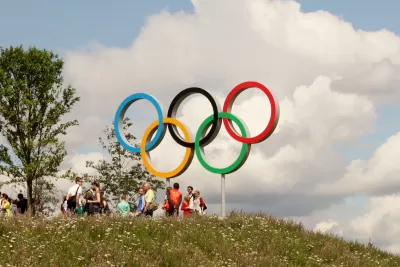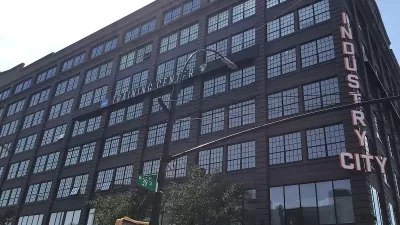In the first half of the 20th century, the Olympic games actually had a medal competition for town planning.

In the four Olympic games between 1928 and 1948 (Amsterdam, Los Angeles, Berlin, and London), gold, silver, and bronze medals were handed out in the decidedly non-athletic competition of town planning. Jack Goodman writes in Atlas Obscura that "town planning" fell under the architectural design category along with "mixed architecture" and "mixed architecture, architectural designs," which were a part of the larger "Arts" portion of the Olympic games that included everything from literature to sculpture. The only American to medal in town planning was Charles Downing Lay at the 1936 Olympics in Berlin, for his design for the redevelopment of Marine Park in Brooklyn. He scored a silver, beaten by the German team of Werner March & Walter March for their design of Reich Sport Field.
"Along with town planning, the lineup of events also included painting, sculpture, literature and music. Baron Pierre de Coubertin, the founder of the modern Games, believed art and architecture were a vital component for his vision of the Olympics. The first four decades of the modern Olympic Games saw runners and swimmers competing alongside authors and urban planners."
Despite receiving a silver medal for the Marine Park plan, Goodman writes that the designs were eventually shelved. New, more modest plans for the park were put together by two architects hired by Robert Moses, then the head of the city's Parks Department.
FULL STORY: America's First Medal at the Nazi Olympics Was For...Town Planning

Alabama: Trump Terminates Settlements for Black Communities Harmed By Raw Sewage
Trump deemed the landmark civil rights agreement “illegal DEI and environmental justice policy.”

Planetizen Federal Action Tracker
A weekly monitor of how Trump’s orders and actions are impacting planners and planning in America.

The 120 Year Old Tiny Home Villages That Sheltered San Francisco’s Earthquake Refugees
More than a century ago, San Francisco mobilized to house thousands of residents displaced by the 1906 earthquake. Could their strategy offer a model for the present?

Indy Neighborhood Group Builds Temporary Multi-Use Path
Community members, aided in part by funding from the city, repurposed a vehicle lane to create a protected bike and pedestrian path for the summer season.

Congestion Pricing Drops Holland Tunnel Delays by 65 Percent
New York City’s contentious tolling program has yielded improved traffic and roughly $100 million in revenue for the MTA.

In Both Crashes and Crime, Public Transportation is Far Safer than Driving
Contrary to popular assumptions, public transportation has far lower crash and crime rates than automobile travel. For safer communities, improve and encourage transit travel.
Urban Design for Planners 1: Software Tools
This six-course series explores essential urban design concepts using open source software and equips planners with the tools they need to participate fully in the urban design process.
Planning for Universal Design
Learn the tools for implementing Universal Design in planning regulations.
Clanton & Associates, Inc.
Jessamine County Fiscal Court
Institute for Housing and Urban Development Studies (IHS)
City of Grandview
Harvard GSD Executive Education
Toledo-Lucas County Plan Commissions
Salt Lake City
NYU Wagner Graduate School of Public Service



























